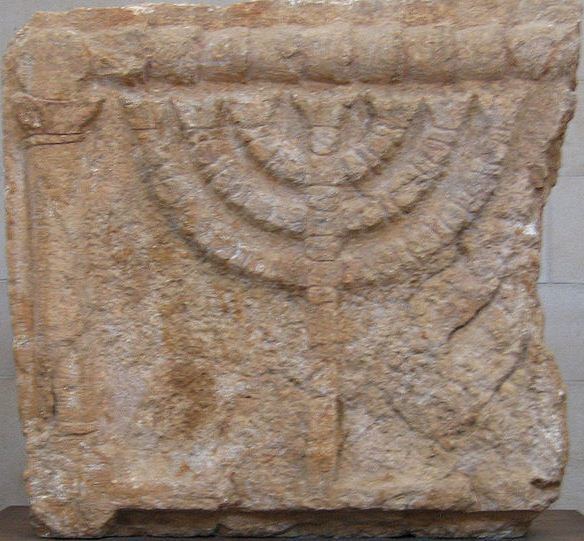 | ||
Ancient synagogues in Palestine refers to synagogues in the region commonly referred to as Palestine, built by the Jewish community from antiquity to the early Middle Ages.
History
Most of the synagogues unearthed in archaeological excavations in Israel, the Palestinian territories and the Golan Heights date from the Roman and Byzantine periods, from the third to seventh centuries. Synagogues from before the destruction of the Second Temple in 70 CE include Gamla, Masada and Herodium. The oldest remains of a Palestinian synagogue dates from the 1st-century CE. After the destruction of the Temple in Jerusalem, the local synagogue became its substitute and from Late Antiquity onward, the number of synagogues discovered rise significantly, with over one hundred being unearthed in Palestine alone. Over fifty of these are situated in Galilee and on the Golan Heights.
A survey conducted in the 1970s found that of the known synagogue inscriptions, 67 were in Greek and found in the coastal and major inland cities. Another 54 were in Aramaic, and 14 in Hebrew. The vast majority of inscriptions are dedicatory, while the remainder feature literary sources or are short labels for images. Decorations used on mosaic floors, capitals and lintels were symbolic of the Temple service and included the menorah, lulav and etrog. Lions were depicted to represent the power of God. Aside from remains found in-situ, architectural elements of the synagogues are often found to have been reused in the houses of adjacent villages. Sometimes dressed stones were transferred further afield and lintels from the doorways of ancient Palestinian synagogues are also to be found in contemporary homes in Syria.
The earliest synagogue inscription uncovered to date is in Greek and dates to the first century BCE or the first century CE. It was discovered in the City of David, just south of the Temple Mount in Jerusalem:
"Theodotos, son of Vettenos the priest and synagogue leader [archisynagogos], son of a synagogue leader and grandson of a synagogue leader, built the synagogue for the reading of the Torah and studying of the commandments, and as a hostel with chambers and water installations to provide for the needs of itinerants from abroad, which his fathers, the elders, and Simonides founded."All of the early synagogues were purpose-built and many synagogues dating to the talmudic era onwards had annexes attached to the main structure, indicating that synagogues additionally functioned as a communal centres.
Modern-day synagogue architects have relied upon synagogue architecture in ancient Palestine in an attempt to create an "identifiably Jewish style" of synagogue design. The Henry S. Frank Memorial Synagogue in Philadelphia was inspired by the remains of the synagogue at Kfar Bar'am.
